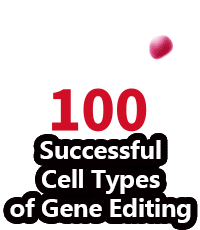Cell Studies on Antiviral CRISPR Approach, Obesity and Pancreatic Cancer, Ancient Andeans
Stanford and Duke University researchers propose a CRISPR-Cas13-based strategy called "prophylactic antiviral CRISPR in human cells" (PAC-MAN) for combating influenza A viruses and coronaviruses such as SARS-CoV-2. The approach relies on RNA-guided inhibition and breakdown of the RNA making up the genomes of these viruses, the team says, and uses CRISPR RNAs aimed at conserved genome regions. In proof-of-principle experiments, the authors used PAC-MAN to dial down influenza A H1N1 levels in respiratory epithelial cells, for example, and their analyses hint that half a dozen CRISPR RNAs may allow for PAC-MAN targeting of at least 90 percent of coronaviruses. From these and other results, they suggest that "this system could possibly buffer against viral evolution and escape, as well as be used to protect against future related pathogenic viruses" using CRISPR RNA pools aimed at distinct parts of the same viral genome or at different viral strains. "While there are remaining hurdles to overcome before this strategy can be used clinically, PAC-MAN has the potential to become a new antiviral strategy," the investigators report.
With the help of a mouse model, a Yale University-led team takes a look at the interactions between obesity, genetic factors, and hormone signaling that can contribute to the development of pancreatic ductal adenocarcinoma (PDAC). Based on findings from exome sequencing, RNA sequencing, and other analyses of tumor and microenvironment samples from slender and girthy mice, the researchers proposed that obesity can speed up the development of PDAC tumors driven by KRAS mutations, in part by altering the expression of hormones such as cholecystokinin by insulin-producing islet beta cells in the pancreas. "Our studies argue that PDAC progression is driven by local obesity-associated changes in the tumor microenvironment and implicate endocrine-exocrine signaling beyond insulin in PDAC development," they report.
Researchers with the University of California, Santa Cruz, Harvard Medical School, and elsewhere present findings from an ancient DNA analysis focused on the Andean highlands. Using samples from 89 individuals who lived in the northern and southern parts of the Andes between 500 and around 9,000 years, the team teased apart population interactions in the past 5,800 years or so, including relatively long distance interactions with populations in Argentina and the Amazon. Among other more recent population patterns, the authors' analyses suggest that the genetic structure present in the region today "began to develop by 5,800 [years before present], followed by bi-directional gene flow between the North and South Highlands, and between the Highlands and Coast." GenomeWeb has more on the analysis, here.
Ubigene Biosciences is co-founded by biological academics and elites from China, the United States, and France. We are located in Guangzhou Science City, which serves as a global center for high technology and innovation. Ubigene Biosciences has 1000㎡ office areas and laboratories, involving genome editing, cell biology technology, and zebrafish research. We provide products and services for plasmids, viruses, cells, and zebrafish. We aim to provide customers with better gene-editing tools for cell or animal research.
We developed CRISPR-U™ and CRISPR-B™(based on CRISPR/Cas9 technology) which is more efficient than general CRISPR/Cas9 in double-strand breaking, CRISPR-U™ and CRISPR-B™ can greatly improve the efficiency of homologous recombination, easily achieve knockout (KO), point mutation (PM) and knockin (KI) in vitro and in vivo.
Genome Editing Platform
——Focusing on the Application of CRISPR-U™ and CRISPR-B™ Gene Editing Technology
Cell Biology Platform
——Focusing on primary cell
2. Provides culture strategies and related products for different cell types.3. Provides cell biology-related services such as cell isolation, extraction and validation.
